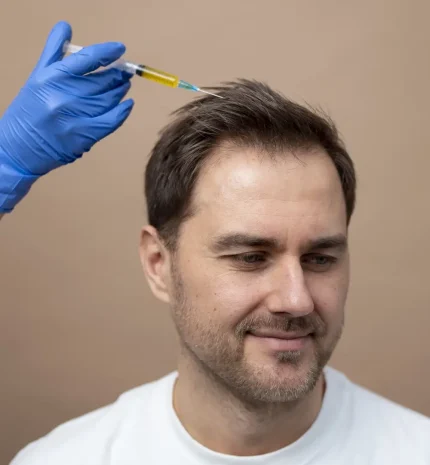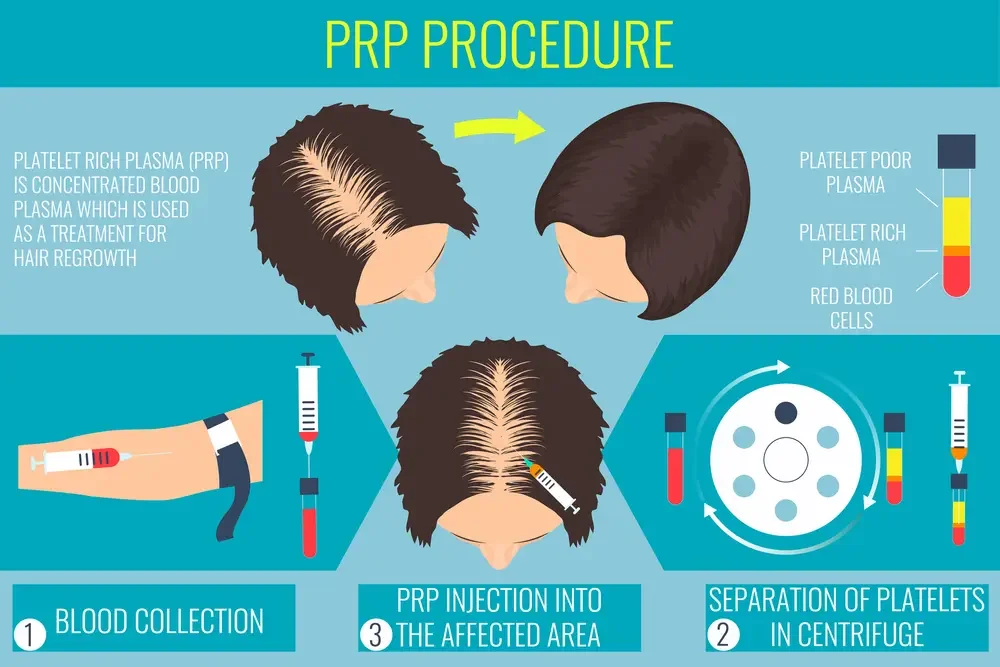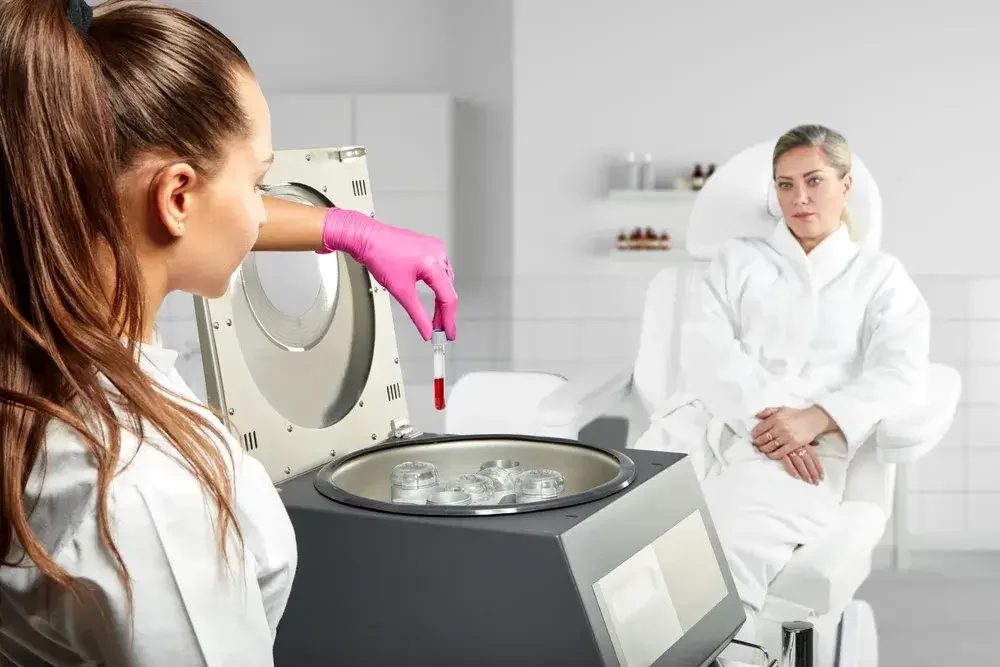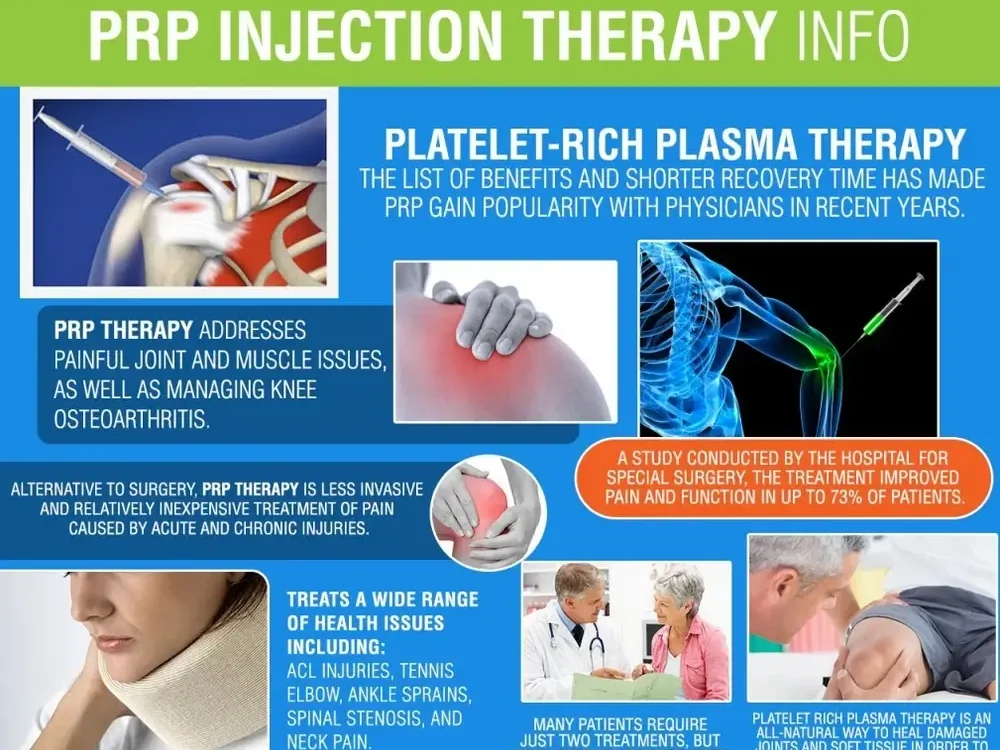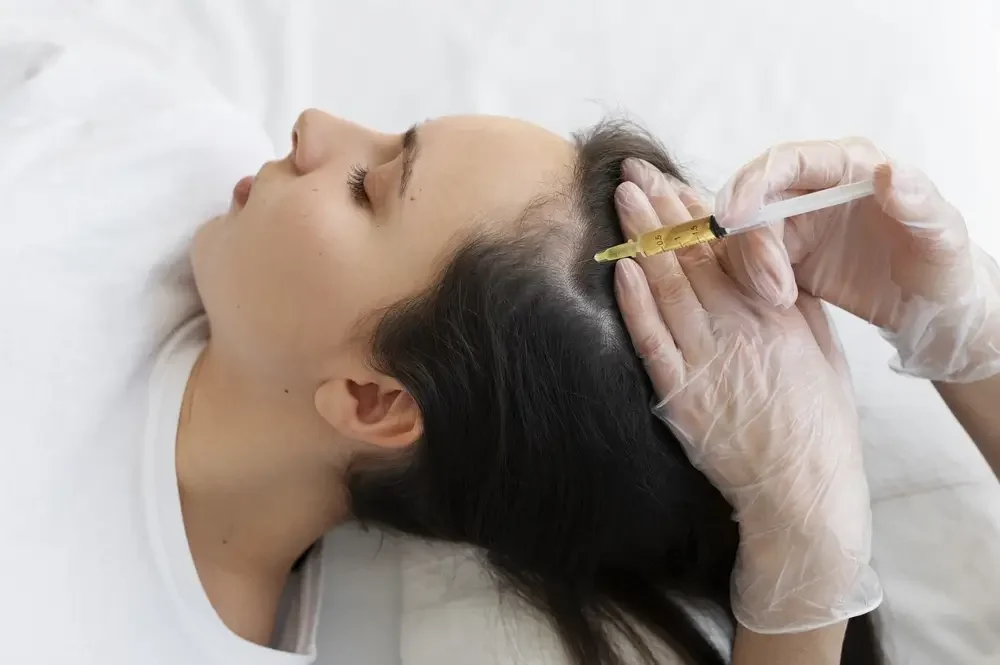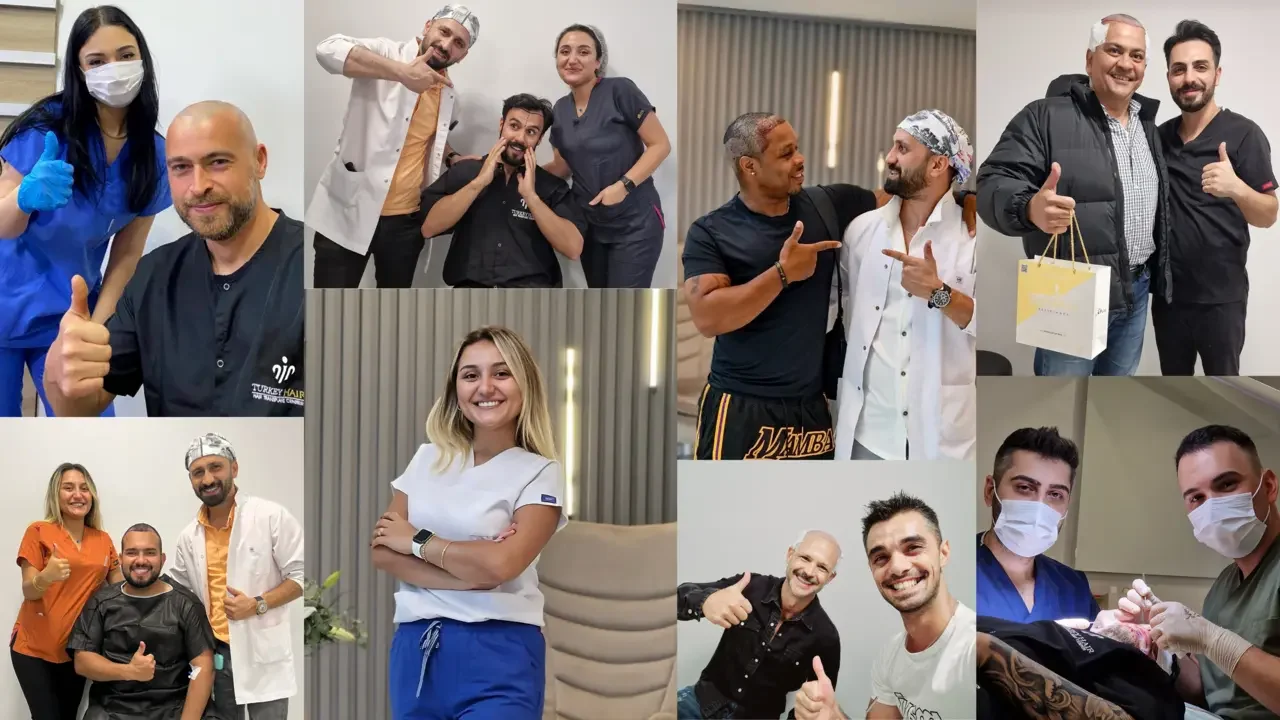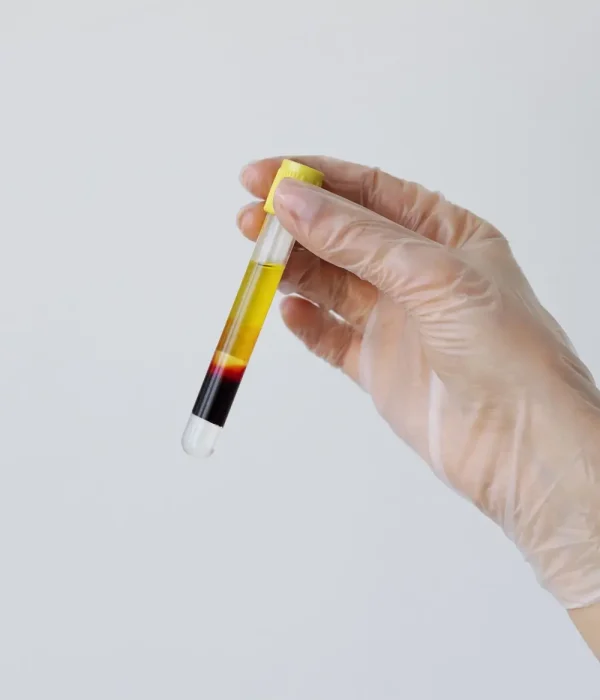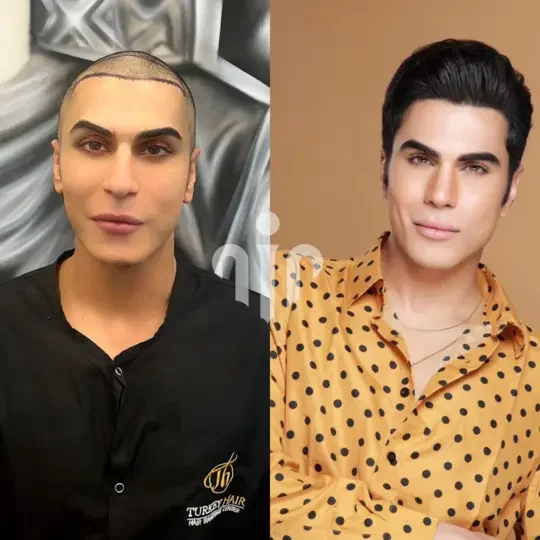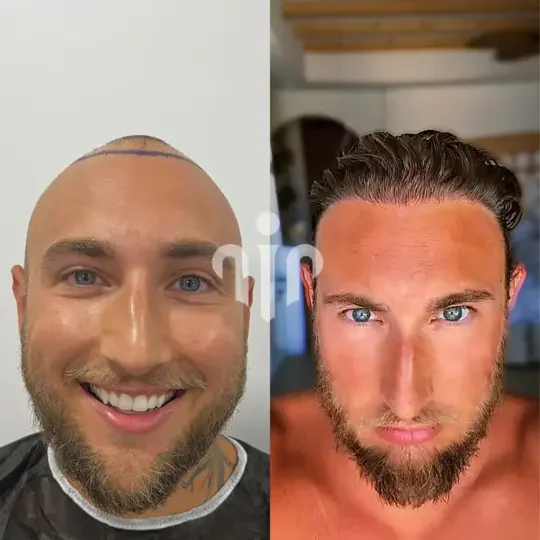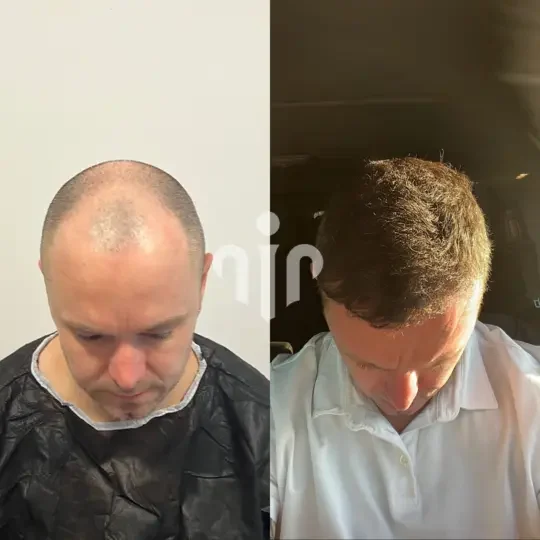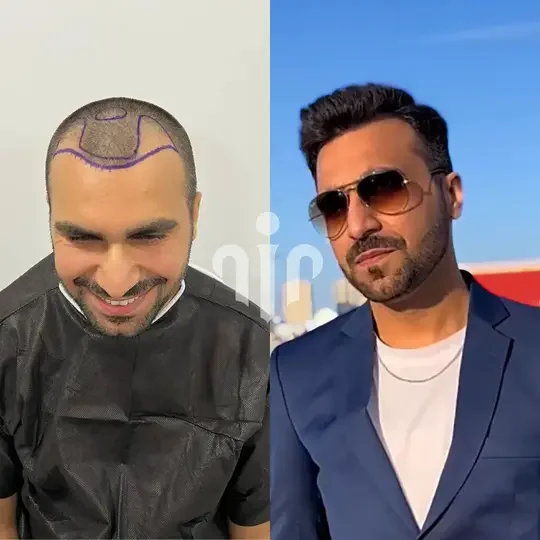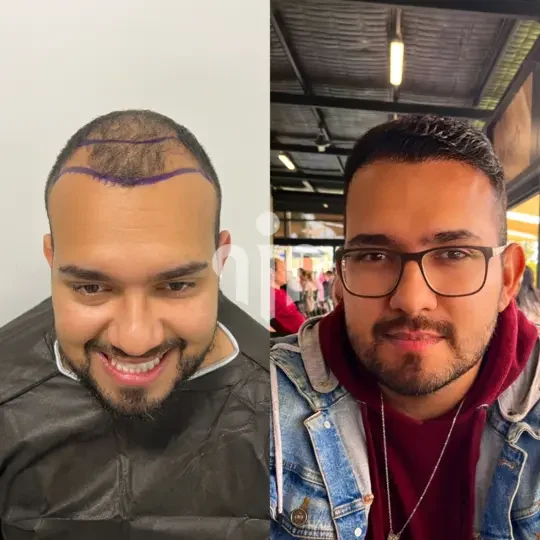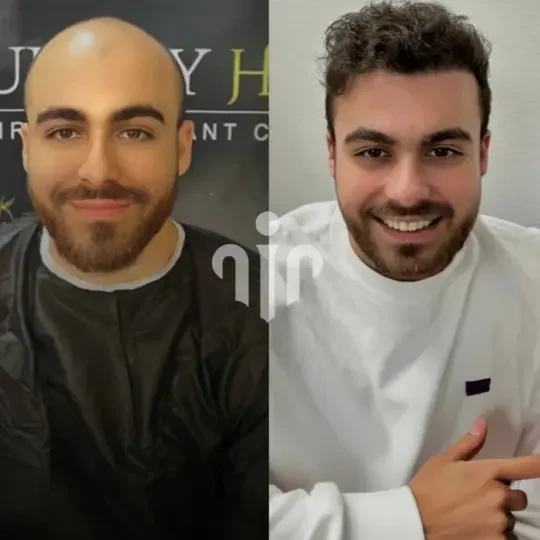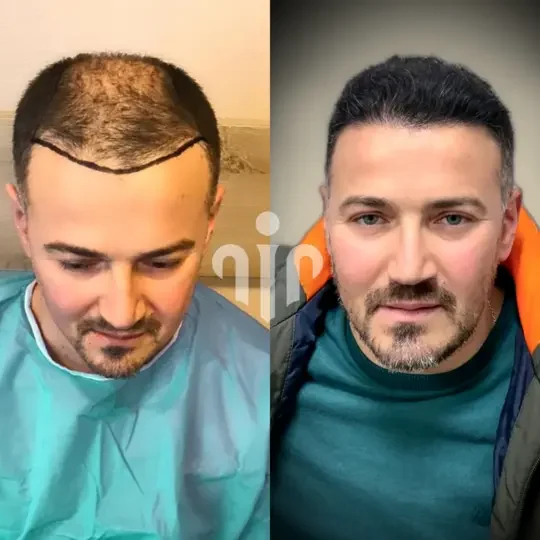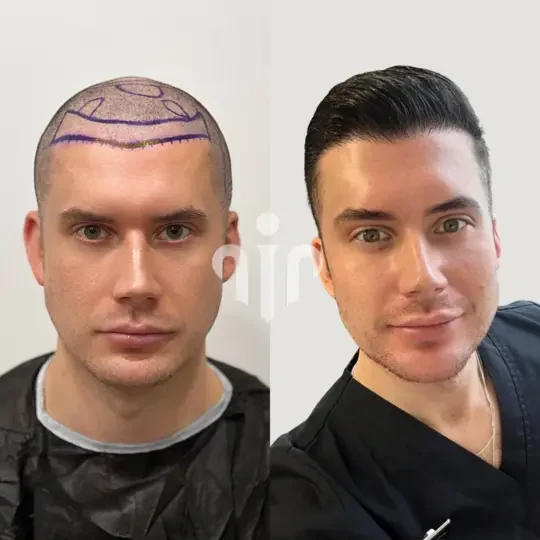PRP (Platelet-Rich Plasma) hair treatment is an innovative treatment method that improves hair health by using an enriched form of platelets in one’s own blood. In this method, the blood sample taken from the person is centrifuged, thus separating the plasma, where platelets are dense. This platelet-rich plasma then stimulates hair follicles and promotes hair growth. PRP hair treatment offers an effective solution for individuals who want to deal with problems such as hair loss, sparse hair and baldness. The growth factors and other healing properties contained in platelets help revitalize hair follicles and improve the quality of hair.
Additionally, this treatment is generally a non-surgical option and has a low risk of allergies or side effects because the person’s own biological material is used. PRP hair treatment is an innovative method that aims to restore hair health in a natural and safe way.
What is PRP Hair Treatment ?
PRP or Platelet Rich Plasma hair treatment is a non-surgical and standard procedure to promote hair loss and separate hair pieces. In this treatment, a small amount of your own blood is usually taken from your arm. It is then processed in a converting machine for deposition.
The separated and platelet-rich plasma is then converted into scalp cells, which occurs through hair loss or thinning. Platelets contain growth hormones and other bioactive proteins that play an important role in tissue repair and regeneration. When applied to the scalp, PRP stimulates hair follicles, encourages hair growth and prolongs hair circulation.
PRP hair treatment is commonly used to address problems such as hair thinning, male and female pattern hair, and alopecia. One of its advantages is that by using its own blood it minimizes the risk of changes or negative side effects. Although individual results vary, many people find PRP hair treatment a valuable option to increase hair width and combat hair loss. It is important to have an expert determine the suitability of PRP hair treatment based on individual needs and details.
Why is Prp Hair Treatment necessary?
PRP (Platelet-Rich Plasma) hair treatment is considered necessary for individuals experiencing hair loss or thinning hair for various reasons. Here are some key reasons why PRP hair treatment may be recommended:
- Stimulating Hair Growth: PRP contains growth factors and bioactive proteins that can stimulate hair follicles, promoting the growth of new hair strands. This can be beneficial for individuals with conditions like androgenetic alopecia (pattern baldness) or other forms of hair loss.
- Improving Hair Thickness and Quality: PRP injections into the scalp can enhance the overall quality of existing hair by improving thickness, texture, and strength. It may contribute to healthier and more resilient hair.
- Non-Surgical Option: PRP hair treatment is a non-surgical procedure, making it an attractive option for individuals who prefer alternatives to invasive surgical hair restoration methods.
- Safe and Natural: Since PRP uses the patient’s own blood, there is a reduced risk of allergic reactions or side effects. It harnesses the body’s natural healing mechanisms to promote hair growth.
- Minimizing Hair Loss: For individuals in the early stages of hair loss or those with mild to moderate thinning, PRP can help slow down or minimize further hair loss, preserving existing hair.
- Customized Treatment Plans: PRP treatments can be tailored to the specific needs of the individual. The frequency and number of sessions can be adjusted based on the severity of hair loss and the desired outcomes.
- Complementary to Other Treatments: PRP can be used in conjunction with other hair restoration methods, such as medications or laser therapy, to enhance overall effectiveness.
How is PRP Hair Treatment done ?
PRP (Platelet Rich Plasma) hair involves several steps and the procedure is usually carried out by a trained healthcare professional in treatment or clinical therapy. An overview of how PRP hair treatment is applied:
| Step | Description |
| 1. Consultation and Assessment | A consultation with a healthcare professional is conducted, considering the extent of hair loss. The patient’s medical history is reviewed, and the suitability of PRP treatment is assessed. |
| 2. Blood Draw | A small amount of blood (usually 10-20 milliliters) is drawn from the patient, similar to a routine blood test. |
| 3. Centrifugation | The drawn blood is placed in a centrifuge machine that spins at high speeds, separating the blood into components and concentrating platelets and plasma. |
| 4. Isolation of Platelet-Rich Plasma | After centrifugation, platelet-rich plasma (PRP) is isolated from other blood components. |
| 5. Preparation of the Scalp | Before PRP injections, the scalp is cleaned, reducing the risk of infection. Local anesthesia may be applied in some cases. |
| 6. PRP Injection | The prepared PRP is injected into areas with noticeable hair loss using a fine needle. The procedure is relatively quick. |
| 7. Post-Treatment Care | After PRP injections, the patient is advised not to wash their hair for a specific period and to avoid intense physical activities for a few days. Mild redness or swelling at injection sites is normal and typically resolves quickly. |
| 8. Follow-Up Sessions | To reduce hair loss or promote new hair growth, a series of PRP sessions can be scheduled at intervals determined by the healthcare professional. |
Note: PRP hair treatment may vary from individual to individual, this table provides a general guide and the treatment process should be guided by our experts.
Does PRP treatment have any side effects?
PRP (Platelet-Rich Plasma) hair treatment is generally considered a safe method and its side effects are minimal. However, as with any medical procedure, some individuals may experience some mild side effects. These side effects are generally temporary and tolerable. Some possible side effects that stand out include:
- Discomfort at the Injection Point: Mild pain or discomfort may occur at the injection sites, but this is usually temporary.
- Redness and Swelling: After the procedure, there may be slight redness or swelling at the injection points. This condition usually resolves itself in a short time.
- Bruising: In rare cases, bruising may occur at the injection points, but it is usually mild and disappears over time.
- Risk of Infection: Injection points are usually prepared in a sterile manner; Therefore, the risk of infection is minimal.
- Allergic Reactions: Since PRP is obtained from the patient’s own blood, the risk of allergic reactions is very low.
However, each individual is different and side effects may vary from person to person. It is important for individuals considering PRP hair treatment to make an evaluation appropriate to their individual situation by sharing their PRP treatment conditions with their healthcare professionals. Turkey Hair Center is breaking new ground with Prp treatment!
Regain the Strength of Hair: Suitable Candidates for PRP Treatment
Hair forms an important part of our personal aesthetics, and healthy, thick hair is the key to feeling good about ourselves. However, hair loss or sparse hair issues can become a struggle faced by many people. PRP (Platelet-Rich Plasma) hair treatment can be a powerful ally for those who want to deal with these problems. So, who is PRP treatment suitable for? Here, are you ready to discover the ideal candidates for this innovative treatment?
- Those Experiencing Early Stage Hair Loss: PRP treatment can be effective in the early stages of hair loss. By revitalizing hair follicles, it can help strengthen existing hair and grow new hair.
- Those with Androgenetic Alopecia (Genetic Baldness): Those who experience hair loss due to genetic factors can improve their hair health with PRP treatment and get support in the fight against genetic baldness.
- Women Experiencing Hair Loss After Hormonal Changes or Pregnancy: Women who experience hair loss due to hormonal changes or mothers who experience hair loss after pregnancy can strengthen their hair and achieve a healthier appearance with PRP treatment.
- Those Who Want to Improve Hair Quality: Those who want to improve their hair quality can increase the thickness, shine and durability of their hair strands with PRP treatment, thus achieving fuller and healthier hair.
- Those who do not want surgical intervention: Those who consider it as an alternative to surgical procedures can prefer PRP treatment. The fact that it is non-invasive and uses the patient’s own blood is an attractive feature for many people.
- Those who apply other hair restoration methods: Individuals who have applied other hair restoration methods but have not achieved the desired results can achieve more effective results by combining PRP treatment with other methods.
Is PRP hair treatment permanent?
PRP (Platelet-Rich Plasma) hair treatment is generally not a permanent solution. PRP is used to reduce hair loss, strengthen existing hair and stimulate new hair growth. However, these effects are usually observed over a period of time and may require periodic treatment sessions to last consistently.
The effects of PRP may vary from person to person, and the treatment process may vary depending on the individual’s hair loss level, genetic factors, age and other individual characteristics. Some people may maintain the effects of treatment for longer periods of time, while others may need repeated sessions at regular intervals.
The Secret of Hair Revival: Surprising Benefits of PRP Hair Treatment
Hair is a distinct reflection of beauty and self-confidence. However, hair loss or sparse hair problems can affect the aesthetic and emotional well-being of many people. This is exactly where PRP (Platelet-Rich Plasma) hair treatment comes into play. PRP treatment, which is almost a hair revitalization ritual, offers a number of surprising benefits while giving a breath of fresh air to hair health.
- Revitalizing Hair Follicles: PRP treatment uses the growth factors contained in platelets to revitalize hair follicles. These factors stimulate hair follicles, encouraging existing hair to strengthen and new hair growth.
- Improving Hair Quality: Treatment can improve the quality of hair strands. Hair can gain a thicker, shiny and healthier appearance. This can increase an individual’s self-confidence while improving the overall appearance of the hair.
- Reducing Hair Loss: PRP treatment can be effective in reducing hair loss. Platelets can slow down the shedding process and minimize hair loss by strengthening hair follicles.
- Fighting Hormonal and Genetic Baldness: The treatment may also be effective in individuals experiencing hair loss due to hormonal changes or genetic factors. With the use of PRP, support can be provided in the fight against genetic baldness.
- A Non-Surgical Option: PRP hair treatment stands out as a non-surgical option. It is ideal for those who do not want surgical intervention and also offers a fast recovery process.
- A Natural Approach with Your Own Blood: PRP treatment is based on the use of the patient’s own blood. This minimizes the risk of allergies and ensures a natural healing process that is harmonious with the body.
- Regular Maintenance and Permanent Results: PRP sessions held at regular intervals are important to maintain hair health and maintain the effects of the treatment for a long time. This supports the process of achieving lasting and satisfactory results.
PRP hair treatment allows not only the external beauty of the hair, but also the revitalization of the hair follicles by nourishing them from the inside. By striking a perfect balance between aesthetics and health, PRP treatment can be the key to self-confidence integrated with hair-derived beauty. This unique treatment method can help restore one’s self-confidence while starting a journey of excellence in restoring the natural strength of hair.
Innovation Against Alopecia: PRP Treatment
This condition, also known as alopecia, is a common problem that affects the quality of life of many people. However, today PRP (Platelet-Rich Plasma) treatment offers a promising solution against alopecia.
PRP treatment is based on the principle of using platelets from the patient’s own blood. These platelets can help reduce hair loss and stimulate new hair growth by stimulating hair follicles with the growth factors they contain.
The benefits of PRP for alopecia include strengthening hair follicles, stimulating new hair growth, and providing support for hormonal/genetic alopecia. This treatment offers a natural approach that is non-surgical and uses the patient’s own biological material.
However, each individual’s situation is different and treatment results may vary depending on an individualized plan. PRP treatment may be a promising option for those struggling with alopecia, but it is important to evaluate its effects and consult with a qualified healthcare professional to achieve the best results. PRP is on its way to becoming an innovative solution offered by modern medicine for the revitalization and strengthening of hair.
Rebirth from Start to Finish: Cheap and Quality PRP Treatment for Your Hair at Turkey Hair Center !
In the grand tapestry of life, your hair speaks volumes about your well-being. Recognizing the significance of luscious locks in boosting confidence, Turkey Hair Center is on a mission to breathe new life into your hair with our PRP (Platelet Rich Plasma) treatment.
Why Choose Turkey Hair Center ?
- Budget-Friendly Excellence: At Turkey Hair Center, we’re proud to assert that quality PRP treatment doesn’t have to break the bank. We believe everyone deserves healthy and vibrant hair, and we’ve tailored our services to offer just that at budget-friendly rates.
- Expert Team: Our seasoned doctors and specialized team are dedicated to focusing on your hair health. We listen attentively, crafting personalized treatment plans tailored to your unique needs.
- Cutting-Edge Technology: Embracing the latest technological advancements in hair health, Turkey Hair Center optimizes your treatment journey for the best possible results. We stay at the forefront of evolving techniques to ensure top-tier service.
- Human-Centric Approach: More than just a clinic, we’re your hair’s extended family. At Turkey Hair Center, we’re here to satisfy your needs and infuse your hair with the care it deserves.
Your hair’s revival begins with Turkey Hair Center! If you aspire to receive personalized attention for your hair, coupled with affordability and quality, reach out to us today. Turkey Hair Center is the go-to destination for breathing life back into your hair, where affordability meets excellence!
FAQ About Prp Hair Treatment
PRP treatment is used in musculoskeletal pain and injuries, post-operative recovery, aesthetic surgery, dental treatments, hair loss treatments.
PRP is definitely not a Stem Cell Therapy. While in stem cell therapy, special cells belonging to the person are used, platelets taken from the patient’s body are used to repair tissue damage in PRP therapy.
PRP treatment usually has mild and temporary side effects, the most common of which may be infection, pain or swelling.
Prp treatment takes approximately 30 to 45 minutes.
PRP (Platelet Rich Plasma) is an effective treatment that helps control hair loss and improve hair quality, but the results are usually temporary. PRP sessions may be required at regular intervals for permanent treatment, and the results may vary depending on the cause of the person’s hair loss.
PRP treatment once a year can be effective for controlling hair loss and improving hair quality, but a treatment plan of 3-4 sessions is usually recommended for more noticeable results. Depending on the person’s hair condition and needs, more frequent sessions may be recommended by the doctor.
Yes, PRP can thicken hair. PRP treatment can improve the appearance of the hair by strengthening the hair follicles and thickening the hair strands.
Yes, PRP can help hair grow faster. PRP treatment stimulates hair growth by stimulating hair follicles, which can cause hair to grow faster. However, results may vary from person to person.
It is generally not recommended to wash hair immediately after treatment. Ideally, you should try not to wash your hair for the first 24 hours after treatment. Afterwards, you can continue the hair washing process according to your doctor’s recommendations.
PRP’s popularity stems from its effectiveness in addressing various health and beauty concerns, including hair loss and skin rejuvenation, with minimal invasiveness, natural treatment approach, and low risk of side effects.
Yes, PRP treatment is considered safe when performed by a trained and qualified medical professional. It uses the patient’s own blood, reducing the risk of allergic reactions or infections.
No, PRP is considered safe for hair as it uses the patient’s own blood components. However, it’s important to ensure a qualified practitioner performs the procedure to minimize risks.

